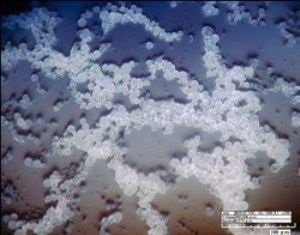Microplastics shedding polyester fabrics Miuscule Fibres - Arhive
Microplastics shedding from polyester fabrics – Miuscule Fibres, Major Impacts Microplastics shedding polyester fabrics Miuscule Fibres
 Polyester, nylon and acrylic are among the most commonly used materials in the textile industry, and yet these all contribute to the plastic pollution that is taking place in our oceans – whether they are recycled or not.
Polyester, nylon and acrylic are among the most commonly used materials in the textile industry, and yet these all contribute to the plastic pollution that is taking place in our oceans – whether they are recycled or not.
In fact, as explained in the above video, the process of recycling polyester or plastic bottles into new fibres does not cut out microfibre pollution, and may have the effect of encouraging further consumption, as consumers will feel reassured that these will be reused rather than ending up in landfill or incineration.
However, at least 8 million tonnes of plastic end up in the ocean each year, and it has been predicted that by 2050 there will be more plastic than fish in the sea.
Every time that synthetic fabrics are washed – whether during the use phase or production, tiny pieces of plastic fibres, namely microfibres, wash off and end up in our water streams.Microplastics shedding polyester fabrics Miuscule Fibres
In fact, recent research by Plymouth University has shown that this can amount to more than 700 000 microscopic fibres during each use of a domestic washing machine. The fibres are so tiny that water treatment plants don’t catch them all.
The microfibres then attract contaminants that are normally not soluble in water, so that they become bigger particles that gather other toxic pollutants.
Not only is this polluting for our water, but also for the creatures, plants and fish living in it – some of which end up on our plates.Microplastics shedding polyester fabrics Miuscule Fibres
Unless the flow of plastics and industrial pollution into the world’s oceans is reduced, marine life will be poisened by them for many centuries to come.
Sir David Attenborough in Blue Planet II
As designers, we have the responsibility to minimise if not eliminate the use of synthetic fibres that are the cause of microplastic pollution. Although it may seem like a sufficient solution to mix fibres in order to reduce the percentage of synthetic fibres in garment compositions, this merely postpones the issue, as these would be difficult to recycle at the end of use phase.Microplastics shedding polyester fabrics Miuscule Fibres
There are various tangible solutions that have proven to be effective to avoid microplastic pollution.
One of these is that of reducing fabric brushing, which is a fabric finishing technique that gives fabrics a certain look and feel, although also damaging the surface and adding to the issue of microfibres.Microplastics shedding polyester fabrics Miuscule Fibres
Ultrasound cutting is another solution, which involves melting the edges of the plastic fibres, resulting in less microfibre shedding compared to the common cut and sew techniques.Microplastics shedding polyester fabrics Miuscule Fibres
The issue can also be avoided if we remove microparticles on fabrics at the production stage: particles accumulate on the fabric during production, meaning that the first wash will shed a lot of microfibres.
However, if these are removed at the production stage, less shedding will happen in the use phase. Tightly knitted fabrics are also more likely to shed fibres than loosely knitted fabrics.Microplastics shedding polyester fabrics Miuscule Fibres
Of course, it is equally important to educate our customers about the impact that synthetic fibres have on the environment, whether recycled or not, in order to influence their behaviours and habits.
The Mistra Future Fashion Report on Microplastics states three recommendations to help control the shedding of microplastics.
The first is to develop a standardised test method, to gain a true understanding of which fibres are more likely to shed.Microplastics shedding polyester fabrics Miuscule Fibres
Secondly, we should make the differentiation between fibres and other microparticles that shed from fabrics. Lastly, microparticles should be removed from fabrics already at the production stage, and disposed of in a safe way.
Phasing out hazardous materials requires awareness and knowledge across the value chain, but is a necessary and urgent measure to take on in order to improve the impact that the fashion industry has on microplastic pollution.
Resources: Phys // MFF Microplastics Report // The Independent
